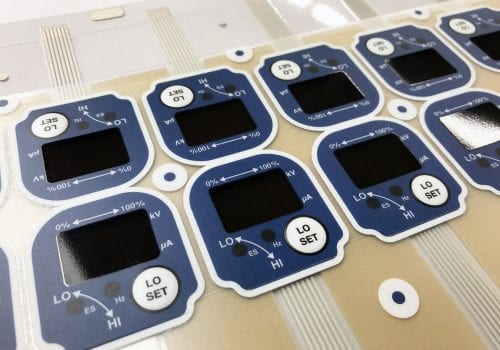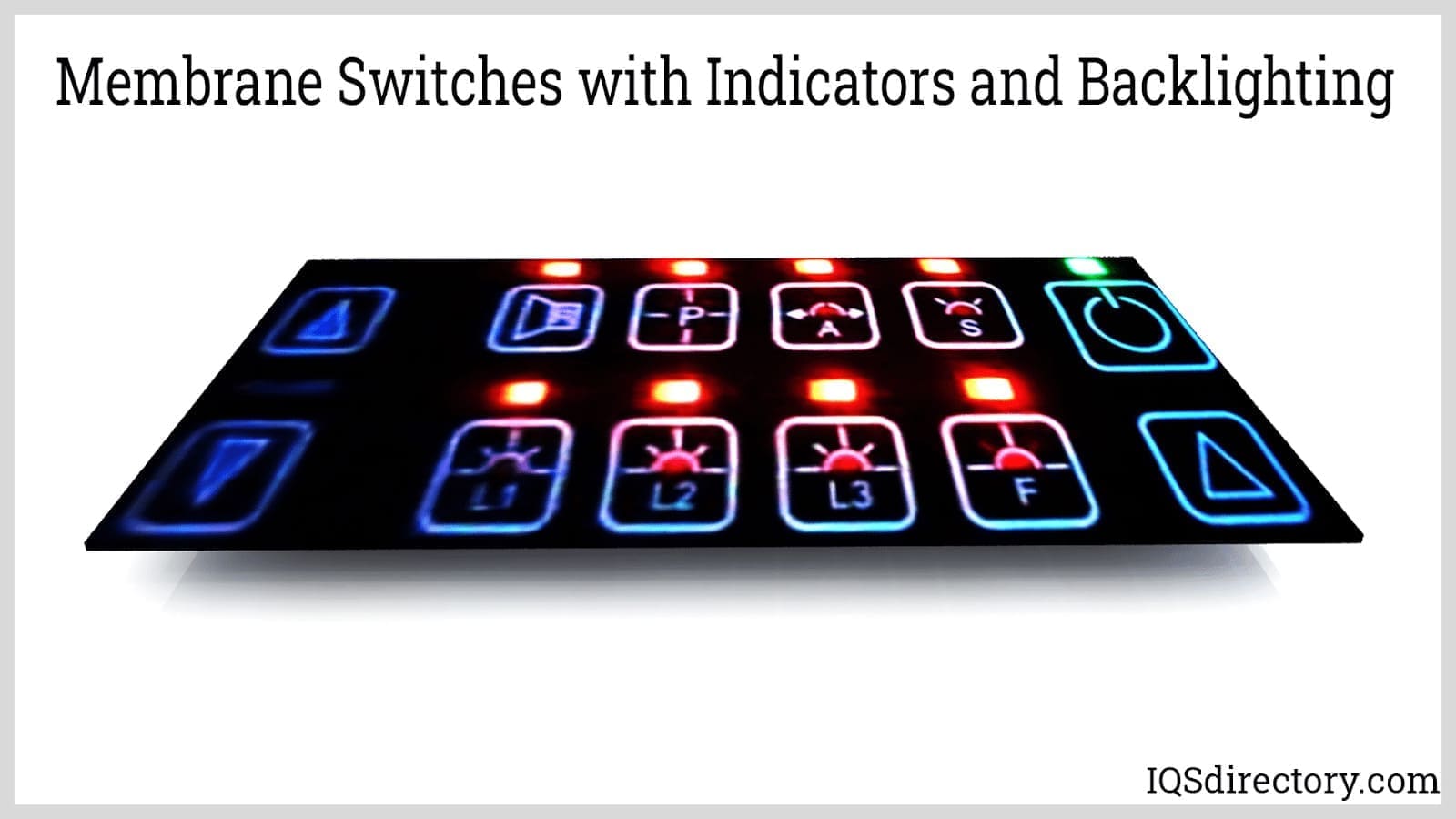Recognizing the Significance of Membrane Change in Modern Electronics
Membrane layer buttons are important components in contemporary digital devices. They use a mix of performance and design that boosts customer interaction. Their long lasting and lightweight nature makes them appropriate for different applications. As markets advance, the demand for modification and advanced features grows. Comprehending just how membrane layer switches over add to development exposes their importance in forming the future of electronics. What lies in advance for this modern technology?
The Basics of Membrane Change Innovation
Although typically forgotten, membrane layer button modern technology plays a vital duty in the modern-day electronic devices landscape - membrane switch. These tools, made up of numerous layers, function as individual interfaces for numerous electronic products, ranging from household appliances to medical equipment. A typical membrane button includes a visuals overlay, a spacer layer, and a circuit layer, which are meticulously assembled to develop a useful interface.When stress is related to the overlay, the circuit layer is completed, permitting signals to be sent to the gadget. This innovation is known for its flexibility, enabling modification in style, performance, and form to meet specific customer requirements. Additionally, membrane layer switches are slim and lightweight, making them ideal for applications where area is a costs. Their longevity and resistance to environmental factors additionally enhance their allure, ensuring they can stand up to severe problems while maintaining performance. Overall, membrane button modern technology is integral to producing easy to use and reliable digital tools

Secret Benefits of Membrane Switches
Membrane layer switches deal several key benefits that make them a preferred choice in numerous electronic applications. Their style enables a portable form element, allowing manufacturers to develop lightweight and streamlined gadgets. Additionally, membrane layer switches are resistant to dirt, wetness, and chemicals, which boosts their toughness and longevity sought after environments. The responsive feedback supplied by these switches can improve customer experience, making them user-friendly and easy to operate.Furthermore, membrane layer buttons can be personalized with varied graphics and colors, enabling for one-of-a-kind branding chances. The production process is typically cost-efficient, especially for high-volume manufacturing, as it lowers assembly time and simplifies style. Membrane changes need marginal upkeep, adding to lower overall operational expenses. These benefits emphasize their expanding appeal in modern electronics, where reliability and user-friendly user interfaces are crucial.

Applications Throughout Numerous Industries
The flexibility of membrane switches enables their widespread adoption throughout numerous industries. In the medical area, they are generally used in analysis equipment and patient surveillance systems, offering a long lasting user interface resistant to impurities. The automobile market makes use of membrane buttons for dashboard controls, enhancing individual experience with streamlined designs that endure rough problems. In customer electronic devices, they act as control board for devices such as microwaves and coffee manufacturers, offering an easy to use user interface that is very easy to tidy. The aerospace field uses membrane layer switches in cabin controls, where reliability and space efficiency are paramount. Furthermore, the industrial field leverages these buttons in machinery and control systems to assure durable operation sought after atmospheres. This wide range of applications emphasizes the versatility of membrane layer buttons, making them essential components in boosting performance and customer communication throughout varied technical landscapes.
Modification and Layout Versatility

Future Trends in Membrane Layer Switch Advancement
Arising fads in membrane layer button development show an expanding focus on enhanced performance and integration with smart technologies. As customer need for a lot more sophisticated digital devices boosts, manufacturers are concentrating on developing membrane layer switches that not just offer basic operational duties however additionally include attributes like touch level of sensitivity, backlighting, and haptic feedback.Furthermore, advancements in products are anticipated to boost toughness and ecological resistance, making membrane switches over suitable for diverse applications in sectors such as medical care, vehicle, and customer electronic devices. The assimilation of capacitive touch technology is likely to end up being more prevalent, enabling sleeker layouts and boosted user interfaces. membrane switch.Additionally, the surge of the Web of Things (IoT) is motivating the growth of membrane switches over that can connect wirelessly with various other devices, boosting interconnectivity. On the whole, the future of membrane layer switch modern technology shows up appealing, driven by technology and the search of user-friendly remedies
Frequently Asked Concerns
Exactly How Do Membrane Layer Changes Compare to Traditional Mechanical Switches?
Membrane layer switches, being extra space-efficient and using a smooth style, contrast with traditional mechanical switches that supply tactile comments. The previous frequently feature adjustable graphics, while the latter usually assure longevity and integrity in numerous applications.
What Materials Are Generally Made Use Of in Membrane Switch Production?
Membrane layer switches are normally generated making use of my review here materials such as polyester, polycarbonate, and printed conductive inks. These materials offer longevity, flexibility, and responsiveness, making them appropriate for different applications in electronic devices and user interfaces.
Can Membrane Switches Be Fixed or Recycled?
Membrane layer buttons can typically be repaired, particularly if small concerns develop, such as adhesive failure or surface damages. Nonetheless, full reuse is generally restricted because of use and prospective destruction of products gradually.
Just How Do Ecological Elements Influence Membrane Change Performance?
Environmental aspects, such as direct exposure, temperature, and moisture to chemicals, significantly influence membrane layer switch efficiency. Severe conditions can lead to deterioration, impacting responsiveness and long life, eventually jeopardizing the performance of the gadget in different applications.
What Is the Typical Life-span of a Membrane Layer Change?
The regular lifespan of a membrane layer button generally varies from 1 to 5 million actuations, relying on elements such as use regularity, ecological conditions, and the products used in manufacturing, influencing sturdiness and efficiency long life. A typical membrane button is composed of a visuals overlay, a spacer layer, and a circuit layer, which are carefully set up to develop a functional interface - membrane switch.When pressure is applied to the overlay, the circuit layer is completed, permitting signals to be transmitted to the gadget. The responsive comments given by these switches can boost customer experience, making them user-friendly and simple to operate.Furthermore, membrane layer buttons can be tailored with varied graphics and shades, permitting for unique branding opportunities. As consumer demand for a lot more advanced digital gadgets boosts, suppliers are concentrating on developing membrane changes that not only serve basic operational roles yet additionally include attributes like touch level of sensitivity, backlighting, and haptic feedback.Furthermore, innovations in products are expected to enhance toughness and ecological resistance, making membrane switches suitable for varied applications in markets such as health care, automobile, and consumer electronics. The assimilation of capacitive touch modern technology is most likely to end up being more widespread, permitting for sleeker styles and improved user interfaces.Additionally, the surge of the Web of Things (IoT) is prompting the advancement go to this web-site of membrane switches over that can interact wirelessly with other tools, improving interconnectivity. Membrane buttons, being a lot more space-efficient helpful site and providing a streamlined style, contrast with typical mechanical switches that offer responsive comments